Protein parameters of seminal plasma and their relationship to semen quality in the nelore bulls breed (Bos taurus indicus)
Keywords:
Zebu, Corporal mass, Seminal quality, Seminal plasma proteinsAbstract
The purpose of this study was to investigate the presence and incidence of specific protein bands on the Nelore bulls' seminal plasma, fit for reproductive activity complete or partially. There were used 68 samples; 20 of the Census and 48 of the Blunt variety, with an average age of 4 years. In the scrotum perimeter (35,05 ± 0,49 cm and 33,30 ± 0,39cm), corporal mass index (302,62 ± 5,87 and 284,19 ± 5,15 Kg|m2) there was difference (p < 0,05) between the Census and Blunt varieties respectively. With regard to corporal weight (627,70 ± 11,37 and 611,58 ± 8,66 kg); height (1,44 ± 0,01e 1,47 ± 0,01m); ejaculation volume (5,82 ± 0,48 and 5,17 ± 0,29 mL), progressive spermatic motility (73,50 ± 2,81% and 75,62 ± 0,97%), spermatic vigor (4,30 ± 0,19 and 4,27 ± 0,11) and mass motility (4,27 ± 0,11 and 3,33 ± 0,23) there was no difference (p>0,05). In spermatic morphology, neither was there inequality between Census and Blunt varieties, with 5,06 ± 8,20% and 5,32 ± 6,40% of mayor defects respectively; 9,91 ± 6,74% and 8,36 ± 6,06% for the minor defects; and 14,76 ± 13,20% and 13,82 ± 12,61% for total defects. The electrophoresis of the seminal plasma revealed protein bands with weights between 5 and 105KDa. In 100% of bulls fit for reproduction, there was found protein with a weight of 13Kda, as well as bands of 20KDa. The other protein bands showed their presence with different incidence percentages in bulls totally or partially fit for reproductive activity. Both of the studied varieties made evident the effective reproductive adaptation under similar climate conditions.
Author Biographies
Ana Sánchez, Fundación Universitaria Juan de Castellanos
Marcelo Mungai, Universidade do Oeste Paulista- UNOESTE
Nelson Machado, Universidade do Oeste Paulista- UNOESTE
References
BARRIOS, B.; (2000). Seminal plasma proteins revert the cold-schock damage of ram sperm membrane. Biology of Reproduction. New York, v.63, pp.1531- 1537.
BERGERON, A. () Comparative study on the phospholipid-binding proteins in seminal plasma of different species. En: INTERNATIONAL CONGRESS ON ANIMAL REPRODUCTION (15 : 2004 : Porto Seguro) p.226.
CHACUR, G.; MACHADO, N. y RABESQUINE, M. Season influence upon seminal plasma proteins in bulls. En: INTERNATIONAL CONGRESS ON ANIMAL REPRODUCTION, (15 : Porto : Seguro) p.236.
COLÉGIO BRASILEIRO DE REPRODUÇÃO ANIMAL (CBRA). (1998). Manual para exame andrológico e avaliação de sêmen animal. 2.ed. Belo Horizonte. 49p.
EINSPAINER, R. et al. (1991) Characterization of a new bioactive protein from bovine seminal fluid. Biochemical and Biophysical Research Communication. Gattingen, Vol.179, No.2 Gattinnen. pp. 1006/ 1010.
GERENA, L. (2000). Inmunocytochemical localization of lipocalin. Type prostaglandin D, synthase in the bull testis and epididymis and on ejaculated sperm. Biology of Reproduction, Pennsylvania, Vol.62, p.547-556.
KILLIAN, J. (1993) Fertility-Associated proteins in Holstein bull seminal plasma. Biology of Reproduction, Pennsylvania, Vol.49, p.1202-1207.
MANJUNATH, P. (2002) Role of seminal plasma phospholipid binding proteins in sperm membrane lipid modification that accurs during capacitation. J Reproduction inmunol. Vol.53, pp.109-119.
PINHO, T. G. (2000) Características seminais de touros jovens (Nelore) Bos taurus indicus de acordo com a biometria e morfologia testicular. En Reprodução Animal, Belo Horizonte, v.25, pp.187-189.
RAMAKRISHNAN: Membrane insertion and lipid- protein interaction of bovine seminal plasma protein PDC 109 investigated by spin- label electron spin resonance spectroscopy. J. Biophys. v.8, n.4, p. 2215-2225. oct. 2001.
RONCOLETTA, M. et al. (1999) Perfil de SDS-PAGE das proteínas do plasma seminal e sua relação com a congelabilidade do sêmen de touros doadores da raça gir. Braz. J. Vet. Res. Anim. Sci. São Paulo. Vol.36, No.2.
SANCHEZ, A.; CHACUR, G.; COUTINHO, V. (2004). “Semen physical and morphological characteristics and corporal mass index of Nelore (Bos Taurus indicus)”. En: INTERNATIONAL CONGRESS ON ANIMAL REPRODUCTION, 15, Porto Seguro. Abstracts... Porto Seguro: Brazilian College of Animal Reproduction. v.1, p.196.




